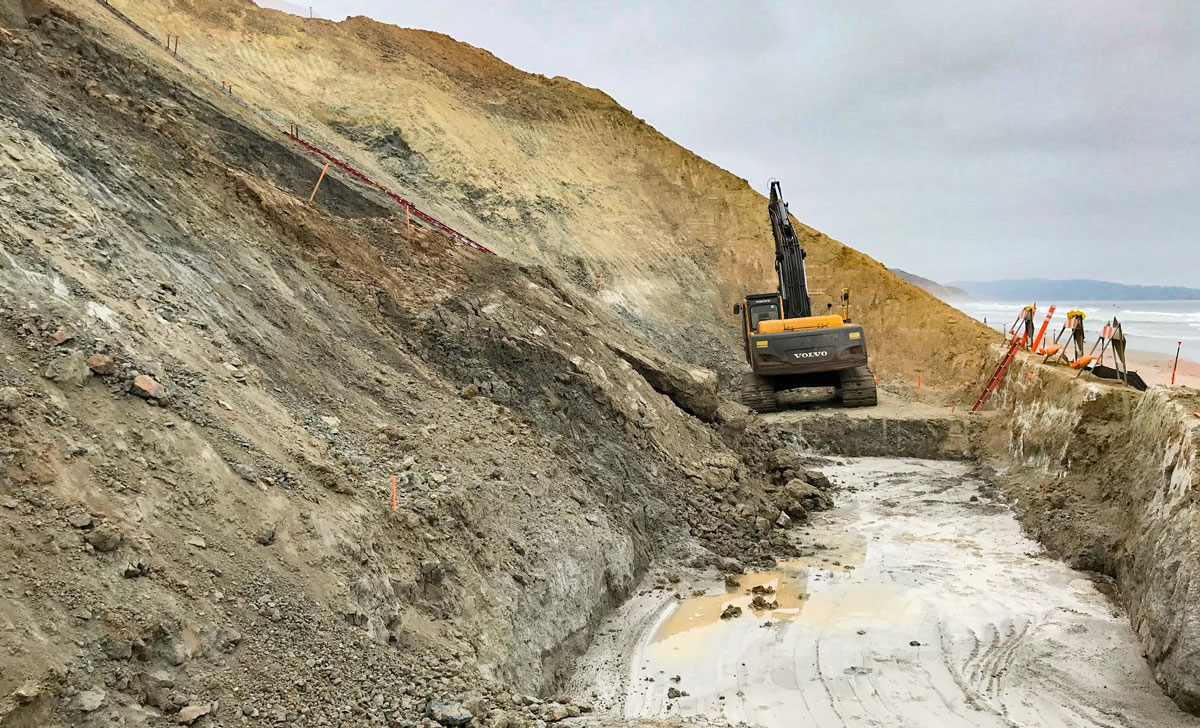DEL MAR — This week, SANDAG has reaffirmed its commitment to major changes along areas of the Del Mar Bluffs following a collapse earlier this year.
Hasan Ikhrata, the executive director of SANDAG, spoke to the Del Mar City Council this week, saying it is critical to focus on larger solutions and not band-aids to the problem.
“I don’t think this region should invest a lot of money trying to piecemeal this and fight nature. Because nature is going to win at the end of the day,” Ikhrata said.
The bluffs just short of Fourth Street in Del Mar suffered a major collapse in February of this year precariously close to the train line that runs along the coast.
Earlier this month, NCTD released updated rail-safety plans for Del Mar that included a geotechnical review and updated plans for fencing along the bluffs.
SANDAG has also been consistent in its desire to move the tracks away from the bluffs.
“We will make it safe while we are looking at ways to move it,” Ikhrata said this week. “Yes it’s going to be costly and yes it’s going to take some time but nothing worth anything won’t be costly and take a lot of time.”
To make it safe while working on bigger plans for the movement of the tracks, SANDAG has been working since the collapse in February to stabilize the buffs.
The reconstruction of the slope is tentatively expected to be completed in August followed by the construction of toe walls (embankment wall) at the base of the bluff, according to SANDAG.
Following the construction, SANDAG will work to revegetate the slope which should take 12-18 months to finish.
SANDAG is also in the design phase of stabilization improvements for other bluffs in the city of Del Mar. It says it hopes to hold public workshops to go over details of the designs in the Fall and will seek environmental permits in the Spring of 2022.
The aesthetic of the bluffs in Del Mar has been a key point to some on the council and in the public and SANDAG says they are attempting more public outreach with the community to get everyone’s input.
“Our objective is to make sure that stakeholders and members of the public have information that is timely, that is consistent and that is accurate,” Alex Welling, a representative from SANDAG said. “I think we have had great success.”
Some plans for the bluffs from 15th street to 11th Street and from 7th Street to 8th Street include extending the existing seawall and using native vegetation to grow back and hold the bluffs in place.
Councilmember Tracy Martinez expressed her concerns with the current designs after receiving a presentation from SANDAG this week.
“I have to tell you, my first reaction when I saw what it would look like is my heart felt sick,” Martinez said. “It will not look like the same view that people have enjoyed for forever.”
Martinez continued asking if the vibrations from the train line played a major factor in the instability of the bluffs and if moving them would be enough.
Representatives from SANDAG say that after completing a study of train vibrations along the corridor that it does not play a significant role.
“That vibration is not really causing bluff retreat or instability,” Dave Olson, a representative from SANDAG said.
The stabilization efforts then are just temporary solutions to allow the train line to remain active while plans to move the tracks are debated and designed.
“We need to concentrate all of our efforts and studies and discussions and use all of our capital in Washington to make sure we get enough funding to move the tracks off of the bluffs. Period, end of discussion,” Ikhrata said.







